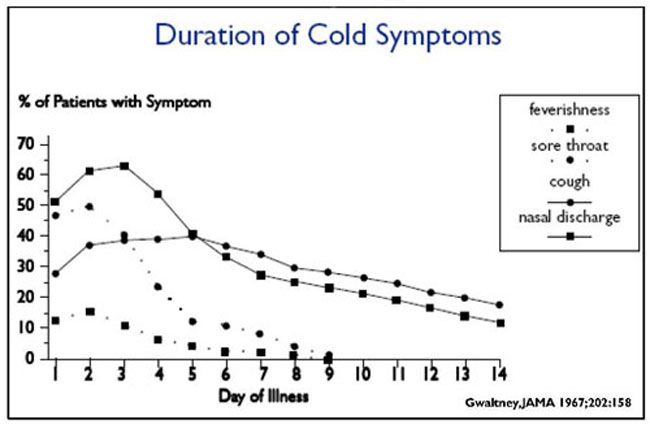 | ||||
Why Do People Catch the Cold Virus in Summer?
How to Prevent the Common Cold in Summertime
from Science Prof Online
Although a person is 4 times more likely to catch a cold in the more frigid months of the year, cold viruses are in the environment 24/7, 365 days a year. The common cold never takes a holiday, although it may end up crashing yours.
Why Are Colds More Common in Winter?
The common cold can be caused by any one of hundreds of different viruses.
Article Summary: Coming down a common cold in the summertime can be even more miserable than suffering the average winter cold. Here's why colds can be caught anytime.
Why Do People Catch Colds in the Summer?
 | ||||
You have free access to a large collection of materials used in a college-level introductory microbiology course. The Virtual Microbiology Classroom provides a wide range of free educational resources including PowerPoint Lectures, Study Guides, Review Questions and Practice Test Questions.
Page last updated: 5/2014
This article originally appeared on Suite101 online magazine.
SCIENCE PHOTOS
SPO VIRTUAL CLASSROOMS
 | ||||||
 | ||||||
SPO is a FREE science education website. Donations are key in helping us provide this resource with fewer ads.
Please help!
(This donation link uses PayPal on a secure connection.)
More than 200 distinct virus strains are known the cause of the common cold; the rhinoviruses are the most common. That’s one of the reasons there is no vaccine to prevent colds. Some of these cold viruses spread best through contact, others through aerosolized droplets that are launched via coughs and sneezes.
In the warm and humid summer months, it is harder for airborne illnesses to spread, since water droplets from humid air are attracted to small particles, such as tiny viruses, weighing them down, and ultimately grounding them. The influenza virus, an airborne virus, is covered with a lipid envelope that does a better job of protecting the virus in chilly, rather than warm temperatures. This is why influenza is a winter illness.
The common cold, although it can be spread through the air, is also transmitted through touch. In addition, people are more often in close, indoor contact during colder months, making it easier to spread germs both by air and by touch.
Why Do Colds Happen in the Summer Too?
Summer colds do still occur, and they can be even more tenacious and miserable than winter colds. The recirculated air in air conditioned environments dries out nasal passages, where cold viruses thrive, making it easier for them to infect the cells of the nasal mucous membrane.
On sweltering days, people flock to air conditioned environments. The workplace is one example, where many people repeatedly touch the same objects—doorknobs, keyboards, staplers—leaving behind viral particles. And sweltering summer days are when parents often opt to take their cabin-fevered children to indoor play areas, all full of surfaces being touched by many tiny hands.
Traveling and the Common Cold
Airplanes, stuffed with business travelers and vacationers, are the perfect enclosed space for sharing germs. The air is recirculated during flight, making airborne illnesses a danger, and with planes often departing again immediately after arriving, it is unlikely that many of the surfaces on the plane cleaned between flights.
Also, when people travel to different geographic areas, they may encounter germs that are local, or endemic—such as versions of the common cold that they may not have ever been exposed to before and that their immune system has no experience battling.
How to Prevent a Summer Cold
- One of the easiest and best defenses against many types of infectious disease is thorough and frequent hand washing.
- Keep hand sanitizers handy for when soap and water isn't available for hand washing.
- Use disinfectant wipes to clean frequently-touched surfaces in the home, such as door knobs, handles, and light switches.
- Wipe down the shopping cart handle with a disinfectant wipe.
- When the weather is nice, spend time outdoors enjoying summer!
For more information on microbiology, see the Virtual Microbiology Classroom of the science education website Science Prof Online.
Sources
- Bauman, R. (2014) Microbiology: With Diseases by Taxonomy, 4th ed., Benjamin Cummings.
- Cardiff University (2011) Summer Colds.
- Mayo Clinic (2011) Common Cold.
- NIH News (2008) NIH Scientists Offer Explanation for Winter Flu Season: Stability of Virus' Membrane at Cold Temperatures May Ease Winter Spread.
- Salamon, M (6/15/2011) Extra insult: Colds in summer nastier, last longer. MSNBC





